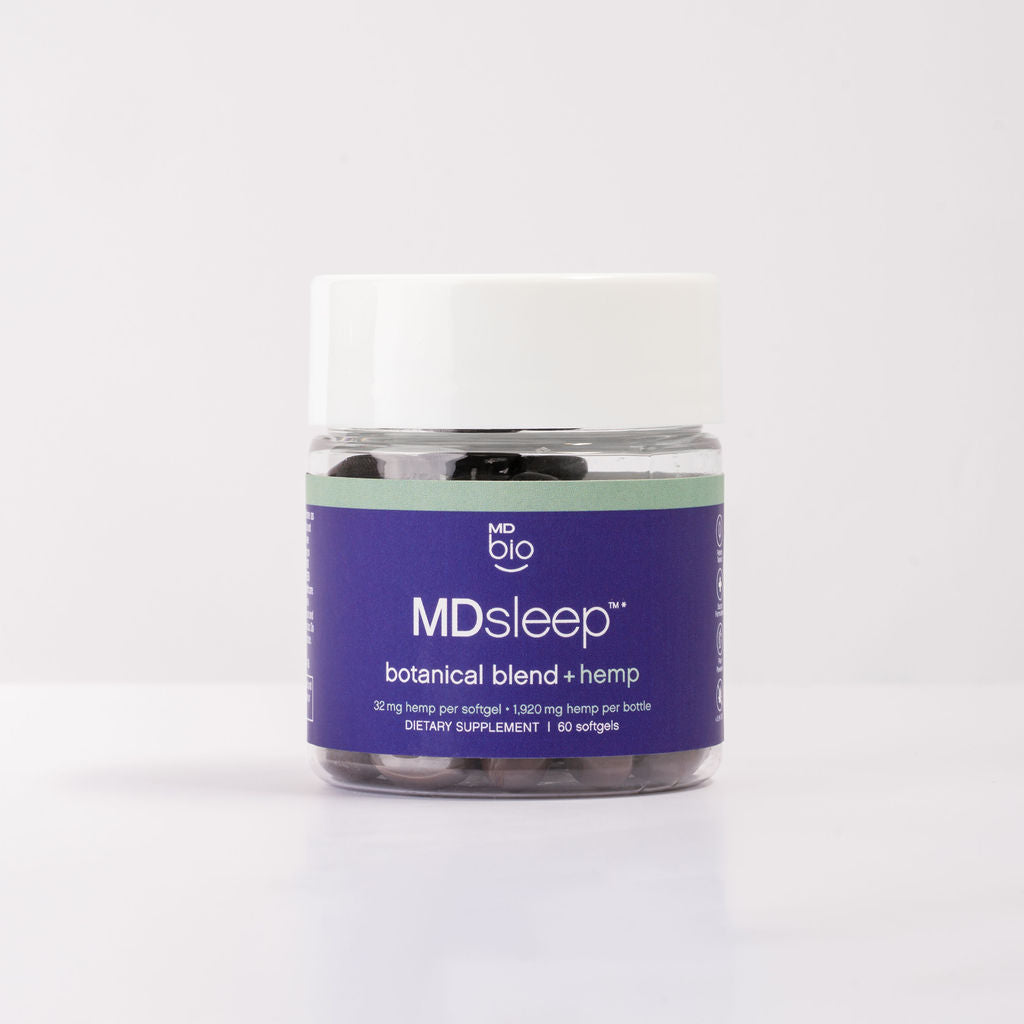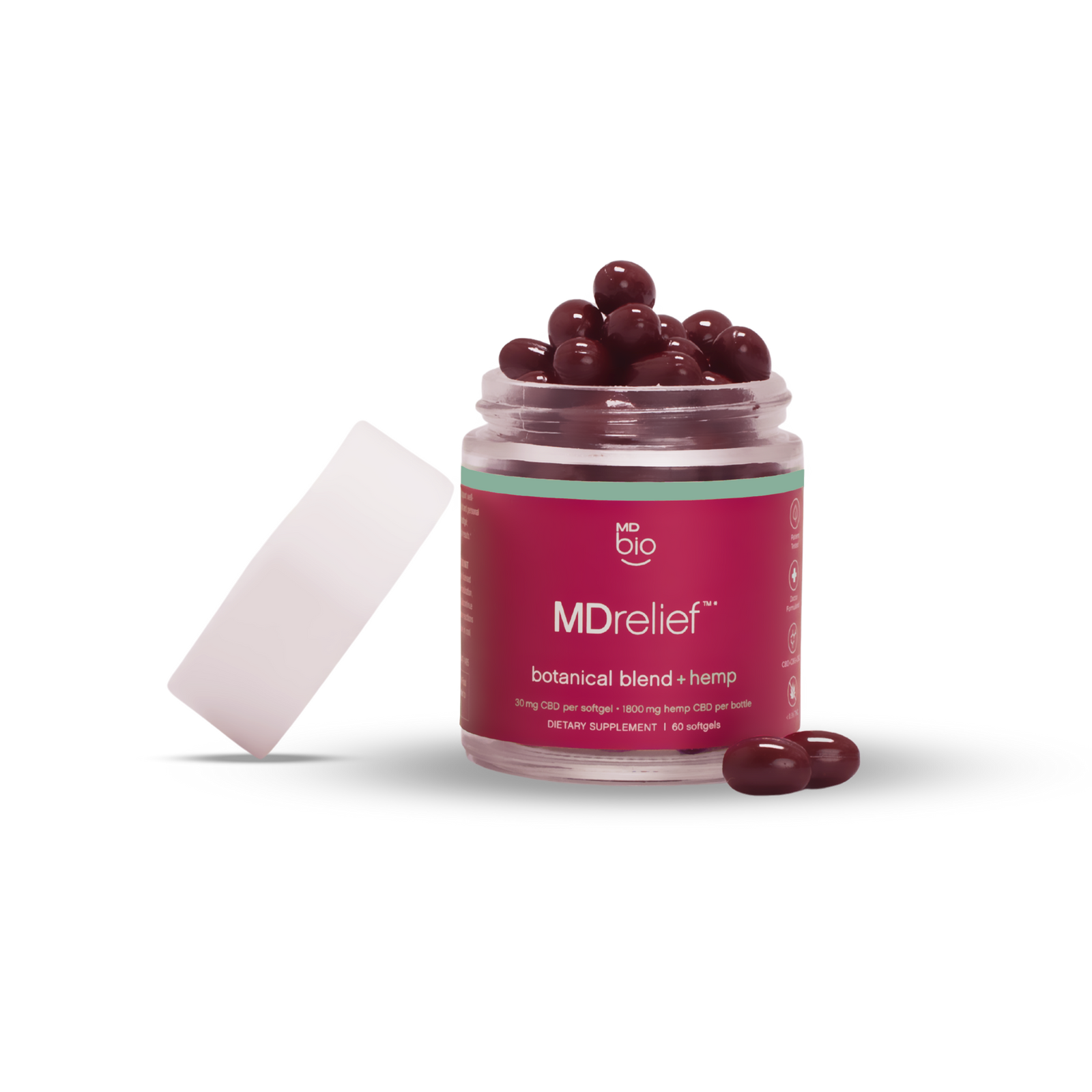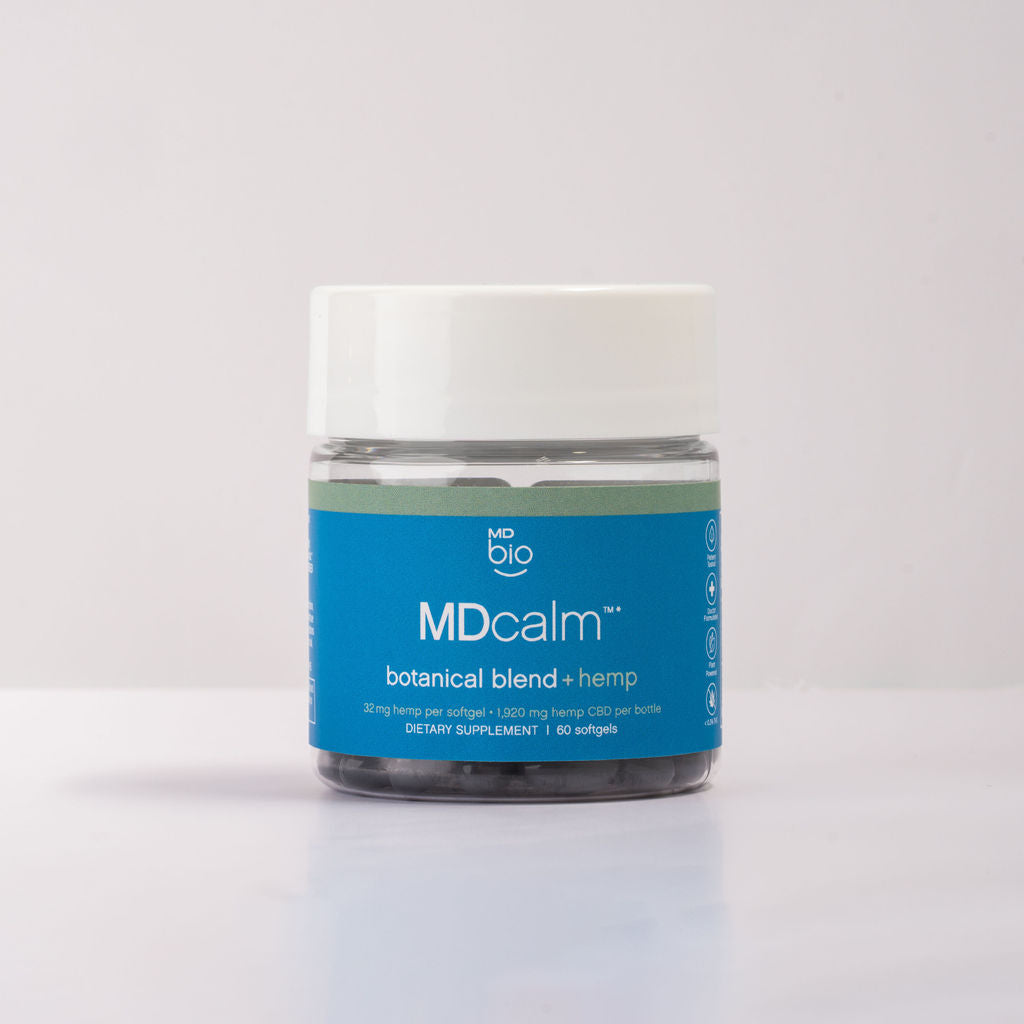
Aches and pains are an unfortunate part of living. However, that doesn't mean there's nothing you can do to relieve your problems and get back to enjoying life.
OTC pain relief is a popular choice for many and a safer alternative to opioid medications. But which is the right choice for you, and is there an even more natural, holistic option for finding relief?
Learn more about your over-the-counter and even non-NSAID pain reliever options below.
What Is OTC Pain Relief?
OTC stands for “over the counter.” This refers to medications that don't need to be prescribed by a physician. They can be purchased over the counter rather than exclusively from a pharmacist.
These medications are designed to relieve a variety of different aches and pains, and some can even help bring down a fever. Each medication has slightly different benefits and effects.
Because these don't need to be prescribed, it often comes down to the user to determine what to take and how much they should use based on the medication's instructions. While doctors can and frequently should be consulted, the easy access to these medications makes them both popular and easily used incorrectly.
When considering over-the-counter pain relievers, you should know what to look for. Below are the two main types: acetaminophen and nonsteroidal anti-inflammatory drugs.
Acetaminophen
Acetaminophen works in two ways: on the brain and how it receives messages and on temperature-controlling parts of the body. This doesn't reduce inflammation, meaning it's not always best for treating injuries that are causing you pain and may not be as effective on its own. Instead, it's better for temporary relief.
This is typically recommended for:
- Headaches
- Common body aches
- Treating arthritis
- Lowering fevers
Perhaps the strongest benefit in this drug type's favor is its few side effects, making it ideal for feverish children. However, it's still vital that you closely follow dosage instructions.
Nonsteroidal Anti-Inflammatory Drugs (NSAIDs)
The irritation of nerve endings causes pain by prostaglandins. This hormone-like substance is created from injuries, but NSAIDs (nonsteroidal anti-inflammatory drugs) work by reducing the level of prostaglandins in your body. By reducing this substance, you will feel less pain.
However, the benefit of these is that it also reduces inflammation in the body, which is better for treating injuries. A variety of medications fall under this category, including ibuprofen, aspirin, and naproxen.
While medications can be only acetaminophen or NSAIDs, some options combine these medication types and may also have caffeine added. These options are most popular for treating headaches.
The Risk of Over-the-Counter Pain Relievers
Over-the-counter pain relievers are safe when used correctly and can be effective for treating injuries, aches, and pains. However, there are risks that come with these medications, and the likelihood of negative side effects increases for those who use these often for treating chronic pain and unknowingly double-dosing.
The risks from OTC pain relief options alsoincrease for certain populations, including people:
- Who are older than 65 years of age
- Taking multiple NSAIDs simultaneously
- With a stomach ulcer or gastritis or a history of these conditions
- With chronic inflammatory bowel diseases, such as Crohn's or ulcerative colitis
- Taking other medications that may cause unwanted or dangerous interactions
What are the risks? They range from uncomfortable to fatal. Here are some possible risks of over-the-counter pain relievers:
- Stomach and digestive tract bleeding
- Reye syndrome
- Liver damage
- Kidney disease or failure
- Death (this is rare but possible when dosages are too high)
Again, proper use and moderation should limit any negative side effects. But for those seeking relief from chronic aches and pains or who fall into a category that puts them at greater risk, it may be difficult to stick to the recommended dosages.
Going the Natural Route — Non-NSAID Pain Reliever Alternatives
Modern over-the-counter pain relievers certainly have their place in treating a variety of ailments. They're generally safe when used in moderation and in accordance with product instructions. Overall, it's best to speak with your doctor about what they would recommend, especially for any new injuries and concerns.
However, it's misguided to throw out thousands of years of medicinal learning and the wisdom of holistic health in favor of OTC pain relief alone. Just as modern medicine has its place, so do non-NSAID pain reliever options. And nature offers many options for anti-inflammatory, relieving ingredients.
Going natural may be the way to go if you're suffering from chronic pain and looking for a way to manage symptoms. By doing so, you won't depend on over-the-counter pain relievers and their unwanted side effects.
CBD
Cannabidiol (CBD) is a naturally occurring chemical in cannabis plants. Many will be more familiar with the terms marijuana and hemp plants. However, the chemical element of cannabidiol doesn't produce the high that marijuana is known for. Instead, you only get the natural herbal benefits of these powerful plants.
As an alternative to OTC pain relief, early research is incredibly promising. For example,one study found that CBD is a useful treatment for chronic pain in adults.
While the researchers are still working to understand the “how” behind the benefits of CBD, most point to the endocannabinoid system (ECS). CBD interacts with the endocannabinoid receptors located in your brain and immune system. These cause anti-inflammatory reactions, providing non-NSAID pain reliever effects.
CBD has been shown to relieve the inflammatory symptoms and aches associated with a variety of causes, including:
- Cancer and cancer treatments
- Nerve damage
- Fibromyalgia
- Arthritis
- Migraines
CBD has additional benefits in addition to being an alternative solution to over-the-counter pain relievers. For example, it can bring a sense of calm like what you'd get fromMDcalm. Overall, this can help you maintain a healthy, enjoyable lifestyle.
White Willow Bark
The bark of willow trees is one of the oldest ingredients in holistic medicine, dating back thousands of years. Unfortunately, this long history of helping people live healthier doesn't mean it has gained the popularity it arguably deserves. Perhaps one reason for the hesitancy is the lack of clinical trials conducted to date.
However, thestudies that have been performed show its strong efficacy and lack of harmful side effects. While people should be aware of possible allergies, any other side effects are typically mild and uncommon when used properly.
Salicin, white willow bark's active ingredient, is what gives it its relieving powers. Once in the body, salicin converts to salicylic acid. Most consider this naturally occurring chemical conversion to be gentler on the stomach compared to over-the-counter pain relievers like aspirin.
On that note, white willow bark is often considered nature's aspirin. It's most popularly used for chronic headaches and back pain. Considering these two problems are a large source of discomfort for people, this ensures its anti-inflammatory properties will be put to good use. It may even ease menstrual cramps or bring down fevers.
Frankincense
Frankincense was long a staple of traditional Chinese medicine. Often used in combination with myrrh, frankincense brings many potential health benefits to those who take advantage of this natural remedy. It comes from the Boswellia tree and is most often used as an oil. It's also very popular with aromatherapy lovers.
As with many natural remedy ingredients, the full extent of the benefits of frankincense is still being explored. For now, itsstudied efficacy is noted as a non-NSAID pain reliever for a variety of conditions. In addition to improved digestion and oral health, it may reduce pain associated with osteoarthritis and rheumatoid arthritis.
For those in studies using frankincense for their arthritis, many noted improved mobility, less stiffness, and less pain overall.
It should be noted that most studies focus on frankincense in combination with other ingredients rather than as a sole remedy. This isn't new — since it was used for traditional Chinese medicine, it was given with other natural herbs and oils. This means that for the best results, it may be best to use frankincense with other ingredients that function as a non-NSAID pain reliever. For example,MDrelief offers a variety of ingredients that are natural alternatives to OTC pain relief, maximizing the effectiveness of the ingredients.
Vitamin E
You've always heard about the importance of getting in your daily dose of vitamins and minerals. However, vitamin E is perhaps one of the powerful groupings of compounds with antioxidant properties that could bring you the relief you're looking for.
Because of its antioxidant effects, it protects your skin from the oxidative damage of free radicals. It also helps your body better absorb vitamins. All of this will lead to a healthier body overall. However, it also seems to have more direct effects as an alternative to over-the-counter pain relievers.
Many studies are noting a link between vitamin E and pain relief in two areas: osteoarthritis,neuropathic pain, and menstrual cramps. The link is being investigated further. While studies on the benefits of vitamin E are well-known, researchers are still learning more about this vitamin as an alternative to OTC pain relief.
Because of this, it's best to consume vitamin E as a daily part of your diet and use it in combination with other natural remedies for a non-NSAID pain reliever.
How to Use Natural Alternatives to OTC Pain Relief in Your Daily Life
Suppose you're interested in adding these non-NSAID pain reliever alternatives to your routine as a holistic solution to your aches and pains. In that case, it can be overwhelming knowing how to get started. Do you need to invest in a full line of CBD products? Do you need to research every food that's rich in vitamin E and have a feast for breakfast? It can all be much easier than you think.
The best way to enjoy the benefits of all these natural ingredients at once is to take supplements that use some combination of the ingredients. This way, you don't need to worry about getting the proper dosage of every beneficial ingredient and instead take one supplement that's designed for the best results. For example,MDrelief features all these above ingredients and is made for pain relief.
Of course, there are other ways to enjoy these remedies individually. Below are some of the ways you can add CBD, white willow bark, frankincense, and vitamin E to your daily life.
CBD
Perhaps the most popular way people use CBD is in oil form. This can be found in capsules or tinctures. Dosages can be tricky as you'll need to find what works for you without overdoing it. Start with a low dose and increase as needed.
White Willow Bark
White willow bark offers a variety of forms, from chewing on unprocessed bark to teas, tinctures, and capsules. It can also be used topically for anyone with sensitive stomachs.
Frankincense
When not in a supplement form, using frankincense topically or as aromatherapy are two of the most popular methods. If you opt for topical application, massage the oil into the painful area.
Vitamin E
Of course, this is a naturally occurring vitamin that you'll find in many foods, including seeds, nuts, and vegetables. However, some foods are also fortified with vitamin E, and you can also find them in vitamin E supplements. This may be in the form of capsules or drops.
Discover Relief With Non-NSAID Pain Reliever Options
If you've been reliant on OTC pain relief, know that there are natural remedies that could reduce the risks and bring you the relief you're looking for. A holistic approach can be an effective and more fulfilling way of caring for your health and can further support modern medicinal practices.
If you're interested in adding more remedies to your routine for greater pain relief, consult with your doctor and learn more about what solutions may be best for you. This way, you can ensure you avoid any unintended interactions with any of your current conditions or medications.
And if you're looking for an easy way to implement natural remedies in your healthcare routine, consider supplements likeMDrelief that could be your alternative to OTC pain relief.
- Discover the Power of Nature! Explore 6 Herbal Remedies for Pain Relief that Really Work. Read More at MD Bio Wellness.
- Explore our curated selection of Herbs for Effective Pain Relief and Inflammation in our guide on herbal remedies for natural pain management.
- Dive into the mystical realm of Frankincense and its Spiritual Healing powers in our comprehensive guide on its magical properties and profound influence.












